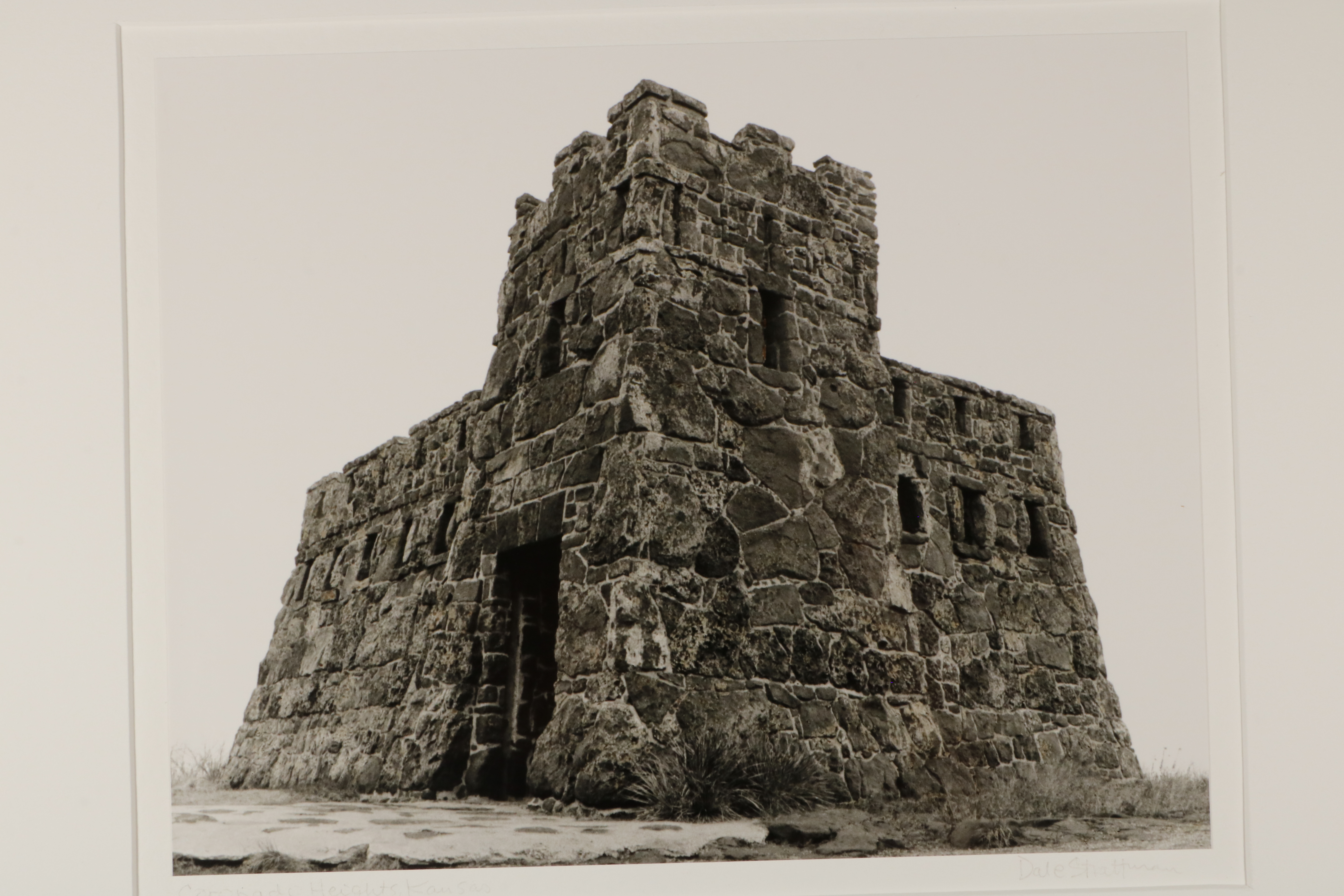Ten years ago, in Dale Strattman’s 65th year, CityArts held a retrospective of his black-and-white, silver gelatin print photographs. Since then, several exhibitions of a topical nature – on women, on children, on angels – have pushed Strattman’s work into something more conceptual.
His current show, “Clusters of Related Ideas,” also at CityArts, represents a step in that path.
The show, containing more than a 100 works, is open to the public through Saturday, Feb. 16, at CityArts, 334 N. Mead St. A closing reception and artist talk will be held at 7 p.m. Feb. 16.
Folks suffering mid-winter doldrums just might find a cure in these striking images.
Strattman says the exhibit’s title “is simply what the show is.”
Perusing recent work in search of a theme, he observed that certain visual elements – curves, angles, shapes – appeared often throughout his career. Photographs taken years apart suddenly became part of larger themes.
Indeed, some pieces fit into more than one cluster, something viewers may notice as they move through the exhibit.
Strattman taught art from 1972 to 2013, first as a teacher at West, Northwest and Northwest Magnet high schools, then at Tabor College and finally as an adjunct instructor at Wichita State University. His work has appeared at the Ulrich Museum other area galleries, benefit auctions throughout Kansas. Strattman donates all proceeds of his sales. In the case of the current show, CityArts will benefit.
Strattman’s 45 years of analog photography experience inform every print. He shoots with a large format Zone VI View Camera and develops the photographs in a darkroom in his basement, producing subtle blacks, silvery greys and a clarity difficult to achieve by other means.
Silver, a precious metal, is the core of the process. Silver salts are suspended in a gelatin emulsion and applied to a flat surface, becoming the light-sensitive material to make a black-and-white photographic image.
Prior to the digital age, this was the norm for making photographs, Strattman said. However, now it is primarily used as a fine art medium and has evolved into a process that few photographers use.
“The clarity and directness of the silver gelatin print has fascinated me for most of my artistic life,” he said. “Its unique beauty is unparalleled.”








